
Jun 16, 2020 | Cassini, Daily Space, Neutron Stars / Pulsars, Stars, Titan, Very Large Array
Join us today as we consider a new paper on why pulsars shine so brightly (hint: it’s those pesky magnetic fields). We take a look at new images of Antares’ massive atmospheric layers. Finally, we share a story from our own Planetary Science Institute: evidence has been found that there are volcanic craters on Saturn’s moon, Titan.
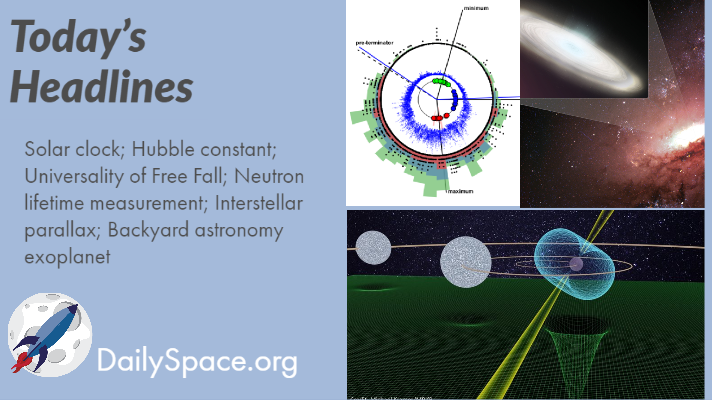
Jun 12, 2020 | Citizen Science, Cosmology, Daily Space, Exoplanets, Neutron Stars / Pulsars, Physics, Stars, The Sun
Join us today as we look at six different astronomy stories. We start with a new clock of solar activity, then talk about three articles on updates to fundamental theories. We follow up with interstellar parallax observations and an exoplanet discovered through backyard astronomy.
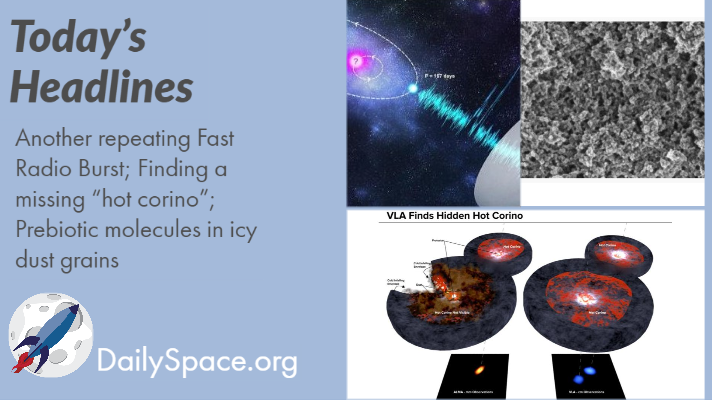
Jun 8, 2020 | Astrobiology, Daily Space, Fast Radio Bursts, Stars
Join us today for a story on another repeating fast radio burst. We talk about hot corinos and how one that went missing is now found. And we discuss research that shows evidence for prebiotic molecules in tiny dust grains covered in ice.
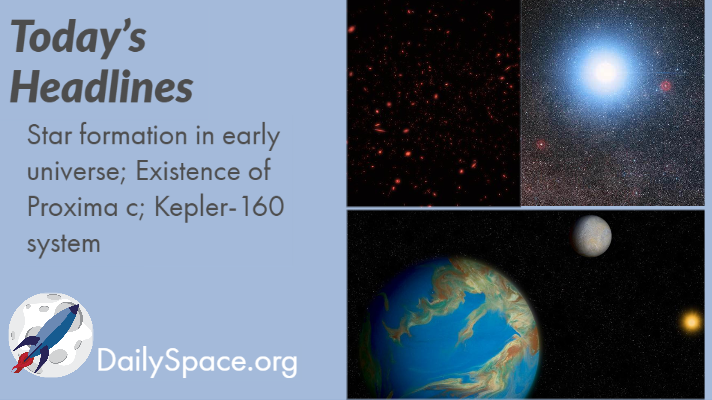
Jun 5, 2020 | Cosmology, Daily Space, Exoplanets, Kepler, Stars
Join us today while we talk about the early formation of stars and galaxies in the universe. We find some joy in an astronomer using 25-year old data to prove that Proxima c exists. And we learn about the Kepler-160 system which is very reminiscent of our own Sun-Earth system.
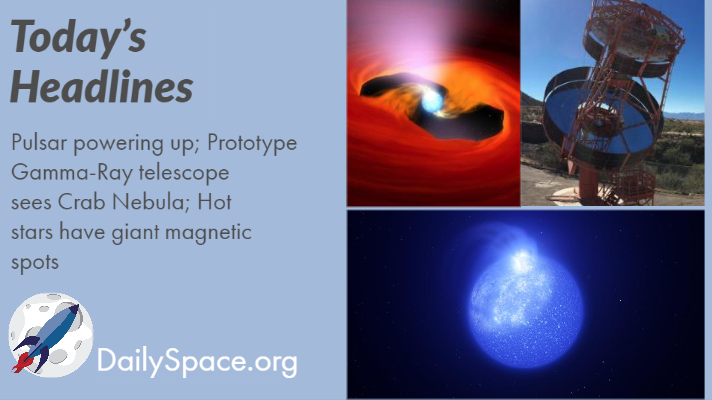
Jun 2, 2020 | AAS, Daily Space, Neutron Stars / Pulsars, Observatories, Stars
Join us today while we look at astronomy stories from around the world: observing the start-up of a pulsar from a grad student in Australia; observing gamma rays with a new prototype telescope in Arizona; and observing giant magnetic spots with the European Southern Observatory.
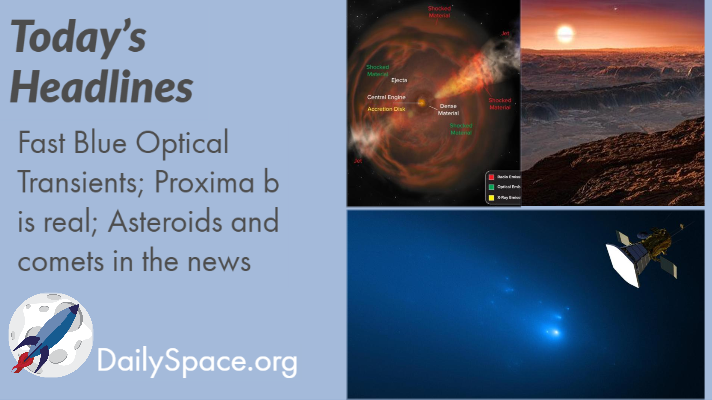
Jun 1, 2020 | AAS, Asteroids, Comets, Daily Space, Earth, Exoplanets, OSIRIS-REx, Supernovae
Join us today as we take a look at a possible new classification of high energy outbursts. Next, we examine the latest evidence that an exoplanet at our nearest stellar neighbor, Proxima Centauri, really exists. And finally, we go over a bunch of recent stories on asteroids and comets, including our own dinosaur-killer, Bennu, Ryugu, and Comet ATLAS.








 We record most shows live, on Twitch. Follow us today to get alerts when we go live.
We record most shows live, on Twitch. Follow us today to get alerts when we go live.